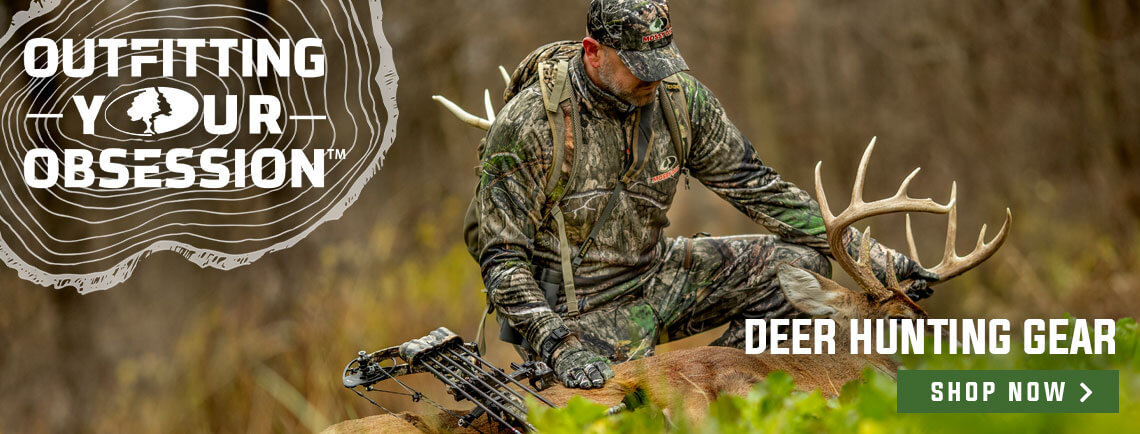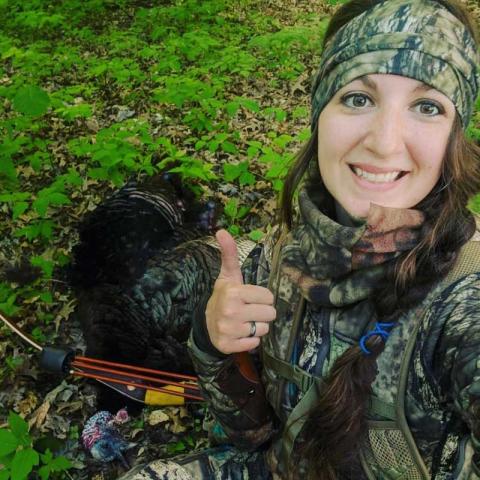Provided by John E. Phillips
Hunters have several different ways to train dogs to track wounded deer. When we look at the German method of deer-tracking dogs with its long and illustrious history, here’s what we’ve learned. “Deer don’t swim on their backs through the woods, so why would someone try to train a deer-tracking dog by dragging a deer hide through the woods hoping his dog would follow that hide’s scent?” asked Patrick Jones, who raises and trains deer-tracking dogs to help hunters locate the deer they’ve shot. Jones explains that in Alabama, his home state, about 20 people per county own, have trained, and use deer-tracking dogs. One of the biggest innovations in training deer-tracking dog has been a technique that comes from Germany and involves a new twist of using deer-tracking shoes.
How Darren Minor Got Involved with Deer-Tracking Dogs
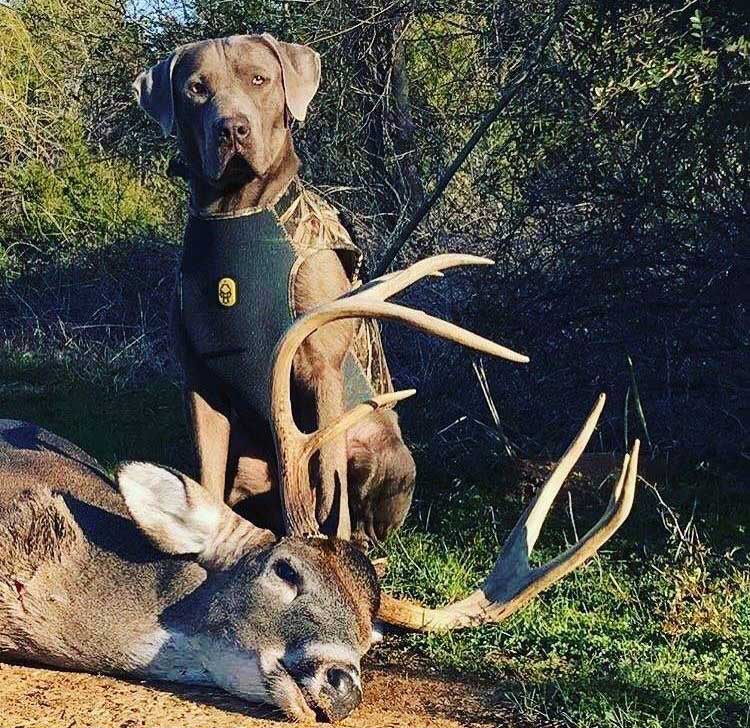
Darren Minor of Maryland shot a deer in 2009 and thought he’d made a good shot. He followed the blood trail and jumped the deer, but then found no blood and lost the trail. At that time, there was a social-media platform called CamoSpace and that’s how Darren Minor got involved with training dogs to track wounded deer.
“I called a man who lived 2 miles away from me I’d found on CamoSpace, who had a tracking dog and asked him if he’d come out and help me locate the deer I’d shot,” Minor explained. “The dog tracked from the point where the deer had been shot. But Briar (the dog) got away from his handler. Then we spent a good bit of time searching for Briar. About an hour later, we were on a high ridge, and Briar was barking down below us. Briar had located my deer, and I thought what a cool thing to have a dog pinpoint a deer that had left no blood trail.
“Then in 2016, I had a friend named Eddie Peterson who had a pair of Wirehaired Dachshund deer-tracking dogs. That year, I was hunting with a muzzleloader, and I shot a buck in the afternoon. Of course, when you shoot black powder, there’s a cloud of smoke next, and you can’t see anything after you pull the trigger. I knew Eddie had dogs, and that he didn’t track with the dogs at night. But when I called him, he said he’d come over in the morning. The next morning, Eddie put his dogs on the track. I thought the deer had run one way, and that was the direction the dogs seemed to run. Next the dogs came back, restarted and went in a totally different direction. I thought to myself, ‘I don’t really believe that buck went that way.’ However, five minutes later, Eddie, who had followed his dogs, called me and said, ‘Bring your deer tag; we found your buck.’”
After seeing a second set of deer-tracking dogs pinpoint deer that would have been lost without the dogs’ keen noses, Minor got interested in learning all he could about acquiring and training a tracking dog. He talked to his wife Sharon, and she said, “Yeah, go ahead and get one of those dogs.” So, Minor spent quite a bit of time researching tracking dogs on the internet. He went to a site called Deer Hunter Forum, but this webpage was more habitat-oriented than tracking-dog oriented. In 2016, he bought a farm in Kentucky and planted green fields and fruit trees and had done all he could to produce ideal habitat for white-tailed deer. He kept studying the pages on the Deer Hunter Forum, until he discovered a section on tracking dogs. “I found a man named Brad Shoemaker from Fair Grove, Missouri, just outside of Springfield, and I noticed that he’d been posting about his Wirehaired Dachshunds tracking dogs. I contacted Brad, who said he had one puppy left. I told him I’d take that pup. I had a friend, Wayne Pruitt, who also was interested in tracking dogs. Wayne agreed to go from his home in Tennessee to pick up the dog for me and meet me in Bowling Green, Kentucky. We named the dog Fritz and began training him.
What’s the Three-Layer System for Training a Deer-Tracking Dog?
When teaching a dog to track, most people start by dragging a portion of a deer liver on a string through the woods because it has such a strong scent to create a trail for young dogs to follow easily. “Tracking dogs are usually started with following a deer liver at 8 weeks old,” Minor said. Minor believes in what is called a layering technique for training tracking dogs. “Before we stop using the liver, we start introducing deer blood on the same trail with the liver. Finally, we’ll quit using the liver, and the dog will learn to follow the scent of the blood trail only. As the dog learns to follow the blood trail, the trainer makes the blood trail longer and lets the blood trail age by allowing several hours to pass before the dog is allowed to start following the blood trail.
“After the dog has proven he can follow a blood trail, we introduce the paste from one or two deer hooves where the interdigital glands are located to the blood trail. There’s a hole between the deer’s toenails where the deer’s interdigital gland produces a pasty substance. The dog not only will follow the blood trail but also the scent left by the interdigital gland. When I began training dogs, I didn’t have a tracking shoe. So, I’d tie two deer hooves to two, 4-foot-long 1-1/4 inch PVC pipes and shove the deer’s legs into those pipes. The hooves were at the bottom of the pipes. Next I duct taped the deer’s feet to the pipes. Then I pushed those hooves into the ground along the blood trail the dog was accustomed to following. After the dog learned to work that combination of blood and interdigital gland scent trail, I’d begin to wean the dog off that combination of scents and just have him follow the interdigital gland scent.”
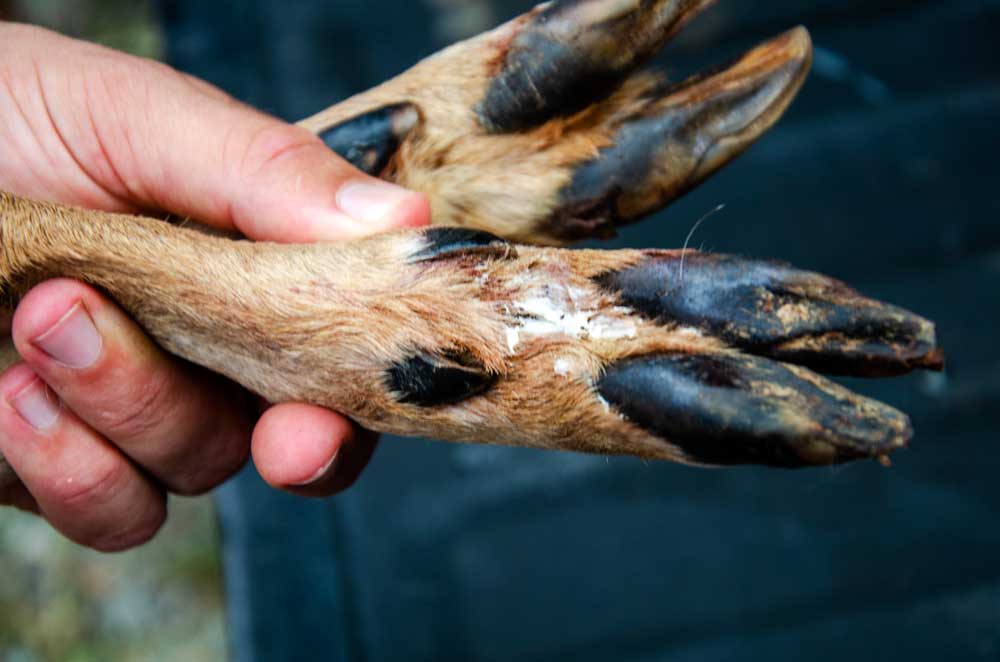
The interdigital gland scent answers the question of how a dog can follow a wounded deer’s trail where there’s no blood on the ground. The 4-foot-long tracking sticks were cumbersome but would lay a scent trail. Minor had joined United Blood Trackers of America (UBT) that also had a Facebook group. The largest group of people who owned and trained tracking dogs participated in that webpage. This organization was started in the early 1980s by Jolanta Jeanneney and her husband John Jeanneney. He authored the book, “Tracking Dogs for Finding Wounded Deer.” The good news is that anyone can join this organization and learn plenty about tracking dogs, training tracking dogs and everything someone needed to know about tracking dogs. Minor joined the group when he first bought a Wirehaired Dachshund tracking dog pup he named Fritz that came from a line of deer-tracking dogs. However, Minor knew absolutely nothing about training a tracking dog.
“I wanted to join the UBT group to get as much information I could about how to train my young pup Fritz,” Minor explains. “I reached out to two or three members of the group and the man from whom I’d bought the pup. I wanted to get different perspectives on how people trained tracking dogs. So, through Instant Messaging and talking to these resource people, I received plenty of information about how to start off training Fritz. The goal was to train my dog to be able to follow a hoof-track-only scent that was 24 hours old for 1,000 yards. In my opinion, a good tracking dog should be able to track the interdigital gland scent left by a deer’s hoof - if someone has gut shot a deer, and there’s no blood trail to follow. Also, if and when the blood trail runs out, the dog still should be able to follow that wounded deer until the deer is recovered.
“To understand how effective the interdigital gland is in leaving a scent, notice a buck in the rut. The buck will have his nose on the ground, following the track of a doe in estrus, since she’s leaving a scent through her interdigital gland. Also, when a doe loses her fawn, she can find that fawn by smelling the interdigital paste that comes out of the fawn’s hoof. I’ve read that the deer’s interdigital gland puts off about 40 different types of scents. If a wounded deer is stressed, he puts out a different scent than another deer just walking through the woods gives off. Most trackers believe that the dog keys in on a different scent that a wounded deer puts out through its interdigital gland that enables the dog to stay on the track of a wounded deer. To have a really good tracking dog, it has to have experience tracking the interdigital gland scent that’s put off through the deer’s hoof.”
Other Ways to Train Tracking Dogs
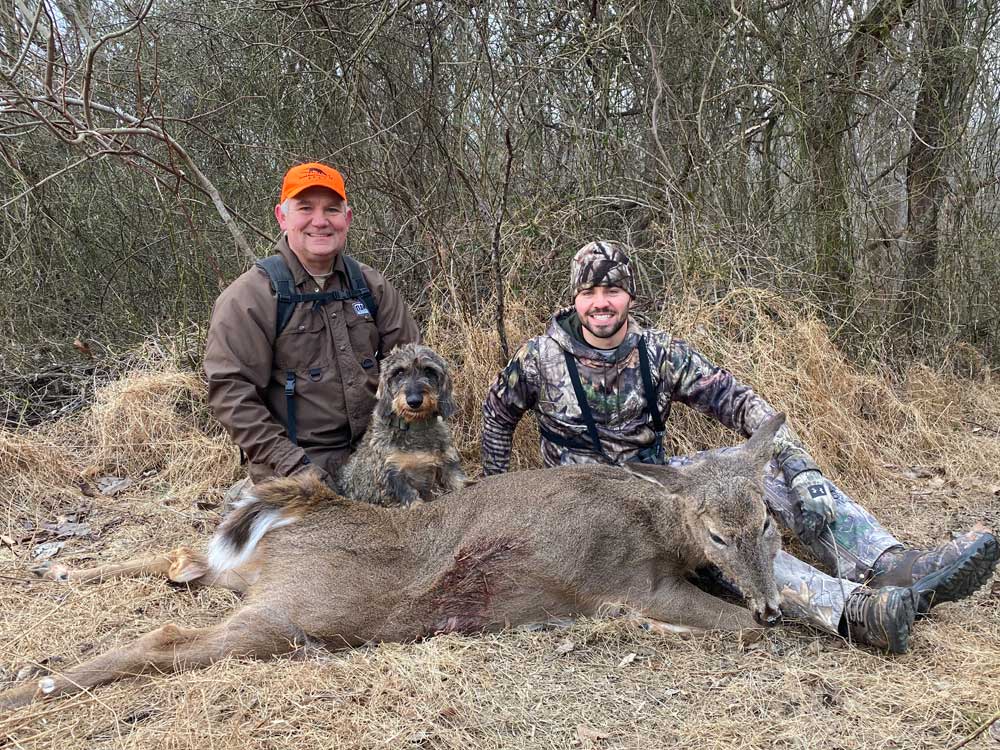
According to Minor, “I asked different people in the UBT organization how to get my dog up to the point where he could track that scent up to 1,000 yards or more. I was surprised that there were several different techniques being used to get a dog to perform that task.”
From his research, Minor learned that many European trackers start off with just using the interdigital gland paste and don’t use a deer liver or deer blood. European hunters have been using this interdigital gland scent system for years to find wounded deer. John Jeanneney, who is viewed by man as the Godfather of training deer-tracking dogs, used this system of tracking and taught only this way to train dogs, beginning in the 1970s. His book, “Tracking Dogs for Finding Wounded Deer,” is the go-to book to learn how to train a tracking dog. This book can be purchased on Amazon, but it’s fairly expensive. A less expensive way to get the book is to go to the UBT website, look in the store section and see copies of the book available there. Jolanta Jeanneney also has a webpage called Born-to-Track, and you can order the book through that webpage too. In the book, Jeanneney favors the Wirehaired Dachshund breed of tracking dogs, also known as teckel dogs. Jolanta is a co-founder of the North American Teckel Club (NATC). A group headquartered in New York, Deer Search, also offers information.
Different breeds of dogs can be trained to find wounded deer. According to Patrick Jones, “Most any breed of dog that will hunt can be trained to find wounded deer – birddogs, rabbit dogs and/or hounds. Each hunter can tell you why he prefers the breed he uses. But I like Labrador retrievers because they’re good family pets and also can be used to retrieve doves, ducks and sticks.”
What’s the Mossy Oak Way of Training Deer-Tracking Dogs?
In the northern United States, tracking dogs are required to be attached to a lead (leash). So, that may account for the popularity of the Wirehaired Dachshund breed with their short legs that don’t cover ground quickly and are easy for their handlers to follow in the northern U.S. and Europe. However, many, if not most, southern states allow tracking dogs to be used without leashes on most private lands, although some states like Alabama require dogs to be on leads on wildlife management areas and other state-owned properties. So, always check the regulations in the state where you’re hunting and planning to use a tracking dog. Labradors can run a track faster than short legged dogs and may be one of the reasons that Labradors often are preferred in the South.
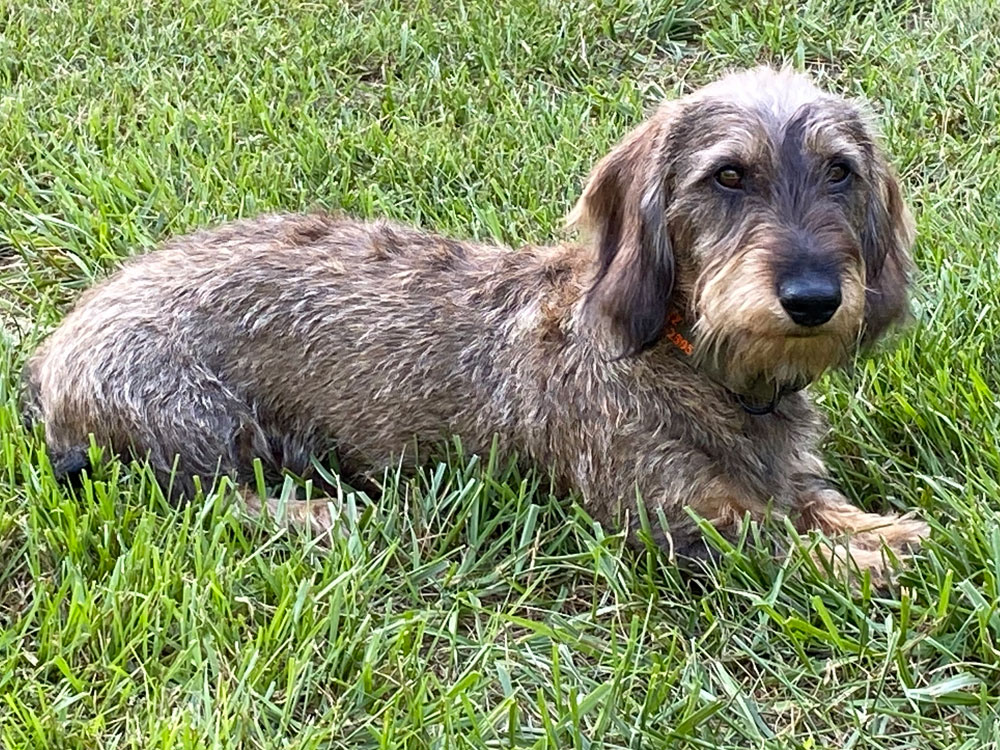
Bill Gibson is the kennel master of Mossy Oak GameKeeper Kennels that primarily trains British Labrador retrievers. Most of the dogs the kennels use for breeding come from the Republic of Ireland and/or the United Kingdom. He said:
“In 2004, I was a member of the U.S. Gun Dog Team that went to Northern Ireland to compete in the Atlantic Working Dog Cup and the PNO Irish International Gun Dog Championship (competed with dogs there from England, Scotland, Wales, the Republic of Ireland and Northern Ireland). My dog was a British lab named Jett that had come from Northern Ireland. I really liked the temperament of the dog and the ease of training this type of dog. To be honest, I liked everything about the British labs that didn’t tend to be super-hyper, had superior noses to the Labradors bred in the USA, and had superior game-finding abilities.”
Today Mossy Oak GameKeeper Kennels train Labradors primarily for finding and retrieving waterfowl and upland game birds. In recent years, they also have started training their dogs for deer recovery. “These British labs can be trained to find and retrieve ducks and upland birds, as well as find wounded deer for hunters,” Gibson explained. “They can locate and/or retrieve about any type of game.”
Although training Labs to find wounded deer isn’t a new idea in the South, in the last four years, the demand for these types of dogs has grown dramatically. According to Gibson, “We had one client who wanted his Labrador trained just for deer recovery. The first year he got the dog back from training, that dog found 37 wounded deer. Then two years later, that same man called us and said, ‘I want my dog to learn basic training.’ So, we taught the dog basic training. We threw out a dummy for the dog to retrieve, and the dog took one look at the dummy and went out into the woods. The dog then returned with a baby deer in his mouth that was still alive because he was carrying it so gently. The deer was released, and the dog finished his deer-retrieving training. Today, he not only finds wounded deer but also doves, quail, geese and other upland birds.”
Gibson doesn’t train Labradors to find wounded deer like many of the northern trainers do. He starts by teaching the dog basic obedience commands like come, sit, stay and heel. Next, he introduces the dog to a deer foot, throws it out in the yard and lets the dog find the foot and retrieve it.
“Next we start throw the deer leg out into high weeds and send the dog out to retrieve it. The dog will bring the leg back and deliver the deer leg to the trainer’s hand. Then we don’t allow the dog to see where we’ve put the deer leg. We send the dog out to retrieve the deer leg just like we would send it out to retrieve a duck that the dog didn’t see fall. We give the demand, ‘Find it!’ Once the dog starts consistently finding the leg, we’ll put a fresh deer hide in water and drag that deer hide on a stick between two handlers into and through the woods to create a trail. The handlers wear rubber boots, so that the dog will track the deer hide and not the handlers.
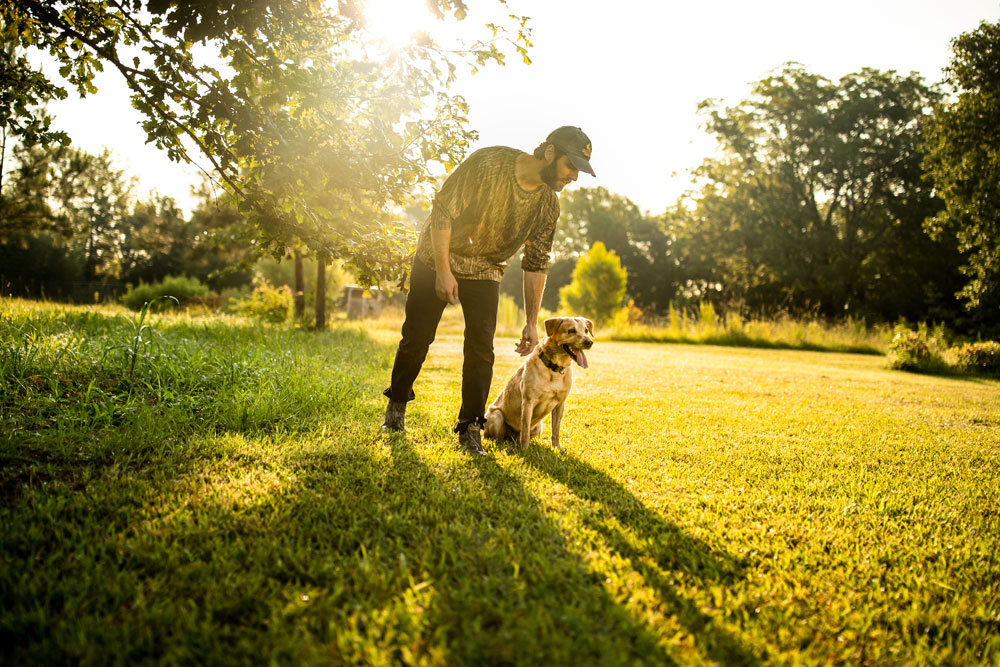
“I had a client that we had trained a deer-recovery dog for call me one day and say, ‘A friend of mine shot a buck with his bow and can’t find it.” He called me and asked me if the dog we had trained could locate this deer that had been shot 23 hours earlier. Also rain had fallen all night. Well, I wasn’t sure my dog would be able to find that deer. But I took my dog and put him out on the track. He located the deer right away - about 300 yards away.
“The most unusual request that we’ve had was when a client called and said, ‘My Lab is really good at finding deer. However, he won’t bark when he locates the downed deer.’ I told this person that to solve that problem, all he had to do was put a GPS collar on his dog to learn where the dog was when he found the deer and see the route he needed to take to get to his dog and the deer. However, he told me, ‘I don’t want to do that, I want to know if you can teach my dog to bark when he finds a deer.’ Well, we worked really hard to get that dog to bark when he located a deer, and we were almost about to give up. Then I suggested that we try one more time. We took a deer hide, wet it down, drug it through the woods and tied it to a tree limb just out of reach of the dog. We turned the dog loose, and he followed the scent of the deer to the tree and began barking at that deer hide just like he was a squirrel dog that had seen a squirrel.”
What Is a Tracking Shoe?
By doing his research online, Darren Minor found that there were some people using deer-tracking shoes.
“A fellow named Paul Couget from Louisiana, a very good deer-tracking trainer, used tracking shoes to train his dogs. I asked him where he got his tracking shoes, and he told me he bought them from Michael Gietl, a German fellow who lived in North Carolina. Gietl bought his tracking shoes directly from Germany, since they weren’t available in the U.S. I contacted Gietl and bought me a pair of German-made tracking shoes that the company – Wasgau – made with the creator of the tracking shoe, Walker Saltzman, who trains deer-tracking dogs in Germany.
“The shoes enabled me to bolt a deer’s hoof to the bottom of the rubber shoes that left no human scent. I could wear these shoes out into the woods and leave a trail for a dog to follow. The big advantage to using the tracking shoe was that once you attached the hoof to the bottom of the rubber shoe, you put these shoes on over your boots and could start laying a track through the woods. A bar goes across the deer foot in the tracking shoes that lets the interdigital gland leave a scent as you walk. By using the shoe, you’re hands-free, and you don’t have to use poles and push them into the ground like I once did with one PVC pole in each hand, laying a track. With these German rubber shoes, all I had to do was walk in the woods to leave a track for the dog to follow.
“In 1985, Saltzman had developed this tracking shoe after making many prototypes, and he started producing them. They mainly were sold only in Germany. When I first learned about them, I called my friend Michael Gietl who had relatives in Germany. We’d send them money, and these relatives would go to the store, buy the shoes and send them to Michael. He’d then send the shoes on to me. Of course that included quite a waiting period to get the shoes. I fell in love with the shoes right away and started tracking and training with them. My partner A.J. Bartlinski, who lived not far from me, called me and said, ‘Do you want to partner with me and see if we can’t get the exclusive rights to sell these shoes in the United States?’
“We initially formed Blood Tracking Dogs of Central Maryland on Facebook. We started getting calls from all over the United States from people wanting to buy these tracking shoes. When we contacted Wasgau and asked to be the sole distributor for their tracking shoes in the U.S., the company was excited to work with us because they were supplying all the tracking-shoe orders in Europe. Wasgau wanted to have a distributor who would stock the shoes and fill the orders in the U.S., rather than Wasgau handling individual orders from the U.S. If anyone from the U.S. contacted the Wasgau store in Germany wanting deer-tracking shoes, Wasgau contacted me, gave me the person’s name and contact information, and I’d sell them the shoes. We solved a problem for Wasgau, and they solved a problem for us.
“The official name of our company is Blood Tracking Dogs LLC. The official name of the shoes is Wasgau Scent Shoe. Right now, in 2021, the shoes retail for $170. We send them to your door, and the shoes come with a one-year warranty and pictures to show how to attach the deer hoof to the bottom of the shoe. The shoes are universal in that one size fits all. We started the business in April of 2021. To order the shoes, you can contact Blood Tracking Dogs of Maryland on Facebook or Bloodtrackingdogsllc.com, or call me at 443-293-2395.”
How to Use the Deer-Tracking Shoes
![]()
![]()
The secret to effectively training a dog to track a wounded deer’s interdigital gland is to only use the feet of deer that have been wounded and have run a good distance. As Darren Minor explained, “You don’t want to use the foot of a deer that has been rifle shot, and the deer has dropped straight to the ground. You want to use the foot from a deer that has been shot and then has run for some time and fallen due to his wound. This wounded deer will produce more of the interdigital paste scent between his toes than the deer that’s not stressed.
“I also want to get two deer feet from the same deer and use those same deer hooves with my two tracking shoes. I’ve found whether you use the hind or the front hooves of the deer doesn’t seem to matter. When I get deer feet, I freeze them and then thaw them before I use them and put them on the shoes. I don’t pull the paste out of the gland. Some people do take the paste out with a key or a screw driver and rub it on the hoof. The best time to do that is the first time you’re introducing the scent from the interdigital gland to your dog. You’re adding more scent to the bottom of the hoof, which works great for younger dogs. With older dogs, you should be able to take the hooves out of the freezer, thaw them and put them on your shoes. Then an older dog should be able to follow that track.
“UBT offers a test to certify your dog as a United Blood Tracker. UBT of New Jersey offers three levels of tracking certification. The test for this certification is that your dog can remain on a wounded deer’s track for a minimum of four hours and stay on that track with two turns that you’ve made with 8 ounces of deer blood along with the interdigital gland scent for 500 yards. Go to United Blood Trackers (UBT) to learn the criteria for the three levels of being a certified blood tracker.”
As this system of tracking wounded deer has grown, more deer hunters today are training their own tracking dogs. Minor explains that any dog that hunts using its nose to follow a scent can be trained as a deer-tracking dog. Also there’s a growing number of trainers with tracking dogs in each state that hunters can call on to help them find their wounded deer, and a list of these people often can be found in Facebook groups. Prices for these services vary from state to state. However, when you’re about to give up on locating your wounded deer, a handler and a good tracking dog may be able to solve this problem for you.

